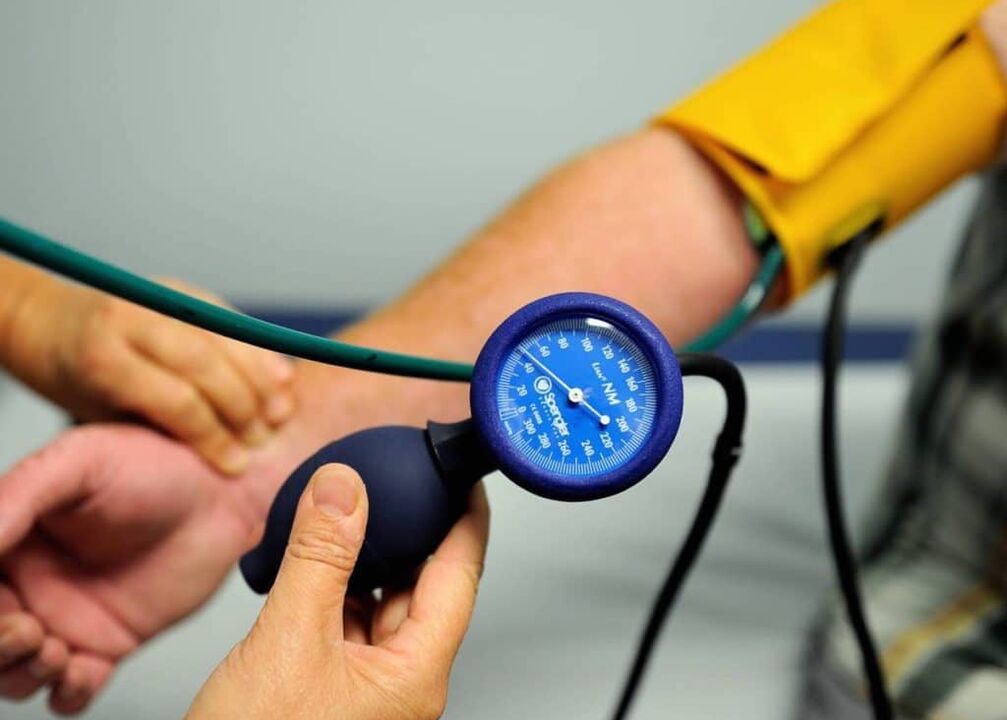High blood pressure in hypertension is the main criterion for chronic hypertension, which requires urgent treatment. It should be borne in mind that slight fluctuations in blood pressure may occur throughout the day: this is normal. But if the high level remains at a high level for a long time or the pressure fluctuates with very large differences, then it is hypertension.

What is the blood pressure of a hypertensive patient?
Blood pressure in humans is expressed by two indicators: upper or systolic and lower (diastolic). In an adult, normal blood pressure should be between 120/80 and 129/84 mmHg. Symptoms indicating illness:
- headaches in the back of the head;
- insomnia;
- dizziness;
- fainting;
- pain in the heart region;
- goosebumps or dark circles before the eyes.
For hypertensive patients, the criteria vary depending on the stage of the disease, as shown in the table:
| Degree of hypertension | Pressure readings mm Hg. Art. | Symptoms | Treatment |
|---|---|---|---|
| Lightweight | From 140 to 90 to 160 to 100 |
|
|
| Moderate | 160/100—180/110 |
|
|
| Heavy | Above 180/110 |
|
|
Hypertension is more dangerous than hypotension. You should also be wary of pathology because in the early stages there are practically no symptoms. Delayed detection of the problem threatens to disrupt the functioning of internal organs and prolong treatment.
How to measure to obtain a reliable result?
Blood pressure measurements must be taken correctly, the accuracy of the result will depend on this. Basic rules for taking measurements:
- Take measurements before meals, 3 times a day.
- The patient's hand should be at heart level.
- The device cuff should be in contact with the skin, but not too tight, so that the index finger can be placed between the cuff and the skin. You need to inflate the air quickly and deflate slowly.
- 30 minutes before the procedure, do not smoke, do not drink coffee, tea or alcohol.
- During the measurement, do not talk or reach out.
- It is best to take measurements with both hands. In this case, the difference between left and right should normally not exceed 10%.
Main methods of prevention
For preventive purposes and to maintain normal blood pressure, you must follow simple requirements:
- monitor fluctuations in body weight;
- the amount of salt consumed should not exceed 5 g per day;
- Perform simple exercises daily;
- remove alcohol and nicotine from consumption;
- add fresh fruits and vegetables to your daily diet.
Proper treatment of high blood pressure
You can stabilize blood pressure, and sometimes completely get rid of the disease, in different ways: traditional or medicinal. At home, you can lower blood pressure with tea and tinctures. Drug treatment should be used with extreme caution and after consulting a doctor. With certain medications, blood pressure drops very quickly. Medicines are divided into groups shown in the table.
| Drug group | Indications | Contraindications |
|---|---|---|
| ACE inhibitors |
|
|
| Sartan |
|
|
| Beta-blockers |
|
Chronic lung disease |
| Diuretics |
|
Hypokalemia: long-term use of the drug removes beneficial substances from the body |
| Fast action |
|
Individual intolerance to the components of the drug |



























